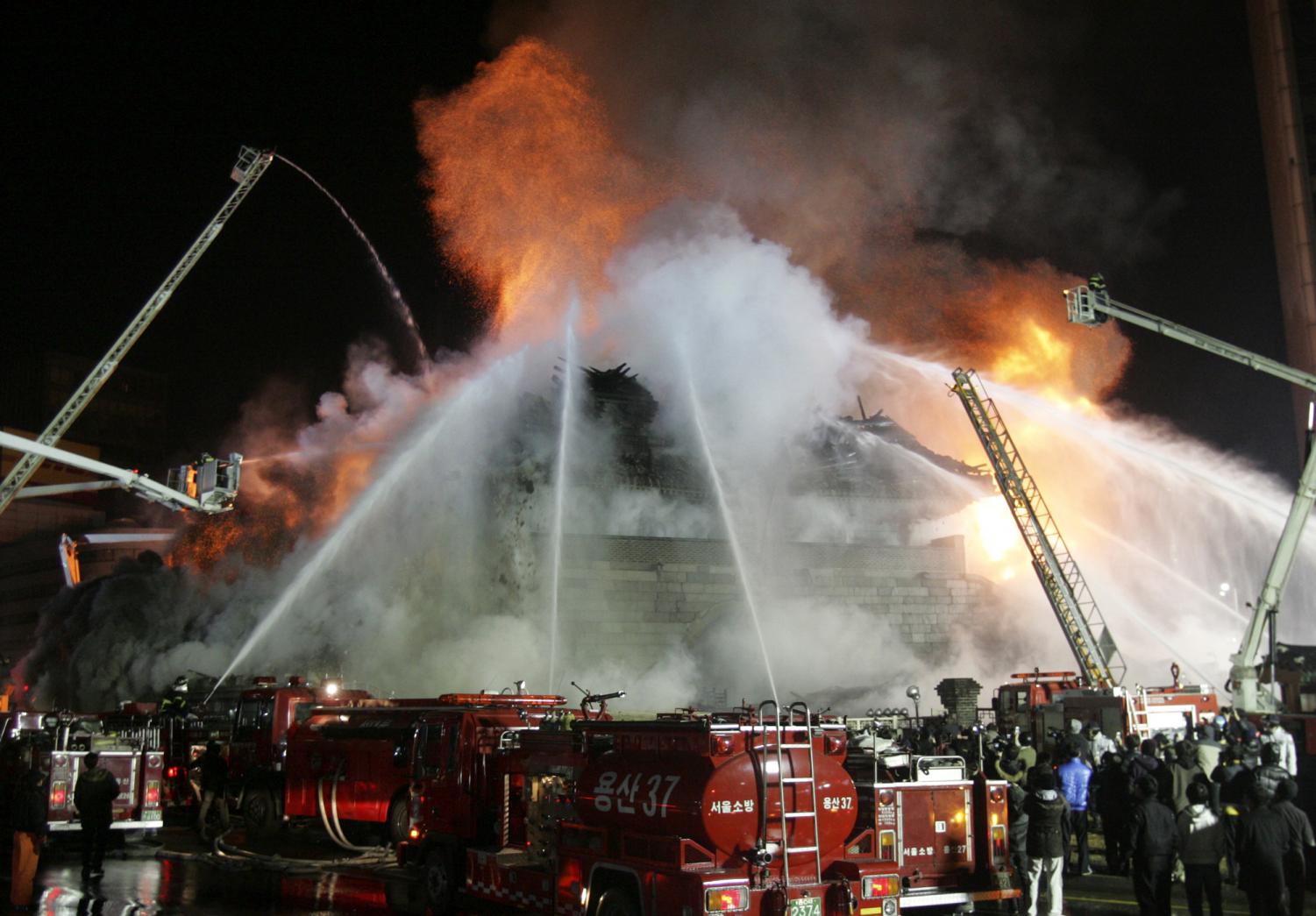Koreans faced the tragic moment as their number one national treasure “Namdaemun” the Great South Gate, the iconic symbol of national pride was destroyed due to fire on Sunday, Feb. 10.
The Korean students at Biola University showed concern and sympathy over the destruction of the Great South Gate.
“It is a pity that the firefighters could not put down the fire quicker to save the structure also it is the securities’ fault for not guarding it properly,” said Korean sophomore Luke Yeim.
The Great South Gate is 600 years old and the oldest landmark structure made of wood and stone that contains two-tiered pagoda-shaped tiled roof. It is one of the biggest touristic sites in Korea, reflecting ancient Korean history in today’s modern society.
The man who was identified by his family name Chae, a 69 years old pensioner, was suspected of setting the fire was arrested on Tuesday. According to the New York Times, Mr. Chae confessed how “he committed the crime out of anger because he felt the government did not take enough care with the appeal he filed after being insufficiently compensated for redevelopment in his residential area.”
Mr. Chae was also convicted of torching a Korean palace in 2006 .
The cost of restoration of the Gate is estimated to be twenty one million dollars, despite the effort of 360 firefighters who fought to put down the fire.
Michelle Lee, assistant Professor of Biblical Studies and Theology reiterated the importance of this monument to Koreans.
“You don’t want to lose the national historical treasure because it relates to sense of identity.”
Far away from some sense of their identity, Korean students cope with the tragedy. “My heart aches,” said junior Lee Hye Jin. “I hope this never happens again, there should be a stronger security system in the future.”







